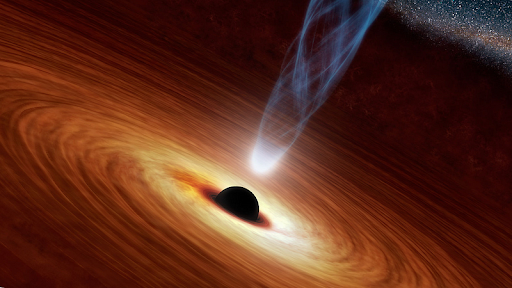Like a monstrous cosmic spider, a distant supermassive black hole is spinning a jet of plasma into a twisted rope, blasting it out at near-light speed. This remarkable event was observed by astronomers using a network of radio telescopes, including the RadioAstron space telescope, which combined to form an Earth-sized antenna. The focus of their observations was the heart of a distant blazar named 3C 279.
These observations provide scientists with the most detailed look yet at an astrophysical jet originating from a supermassive black hole. The images reveal a complex, twisted pattern near the jet’s source, which could challenge the currently accepted theories about the creation and evolution of these jets over time.
“Thanks to RadioAstron and a network of twenty-three radio telescopes distributed across the Earth, we have obtained the highest-resolution image of the interior of a blazar to date, allowing us to observe the internal structure of the jet in such detail for the first time,” said Antonio Fuentes, team leader and researcher at the Institute of Astrophysics of Andalusia (IAA-CSIC).
Blazars like 3C 279 are the bright centers of galaxies that emit powerful light due to the presence of a supermassive black hole. These black holes continuously feed on surrounding matter, which forms flattened plates of gas and dust called “accretion disks”. This process is collectively known as active galactic nuclei, and they often outshine all the stars in their surrounding galaxies. Approximately 10% of active galactic nuclei produce astrophysical jets during the feeding process. When these jets are directly aimed at Earth, they are referred to as blazars.
The new observations of 3C 279 provide unprecedented details about the plasma jet and the supermassive black hole at the center of this blazar. The team discovered twisted filaments of plasma that stretch over 570 light-years from the source. These observations also revealed that the plasma jets are not straight and uniform; rather, they exhibit twists and turns influenced by the central black hole’s power.
The presence of these helical filaments challenges prior theories about the evolution of these jets and suggests the need for revised models. Additionally, the role of magnetic fields in the formation of near-light speed jets from active galactic nuclei may need to be reevaluated. The research highlights the importance of improved radio telescopes and techniques for imaging distant cosmic objects in greater detail.
The team’s findings were published in the journal Nature Astronomy on October 26th.


